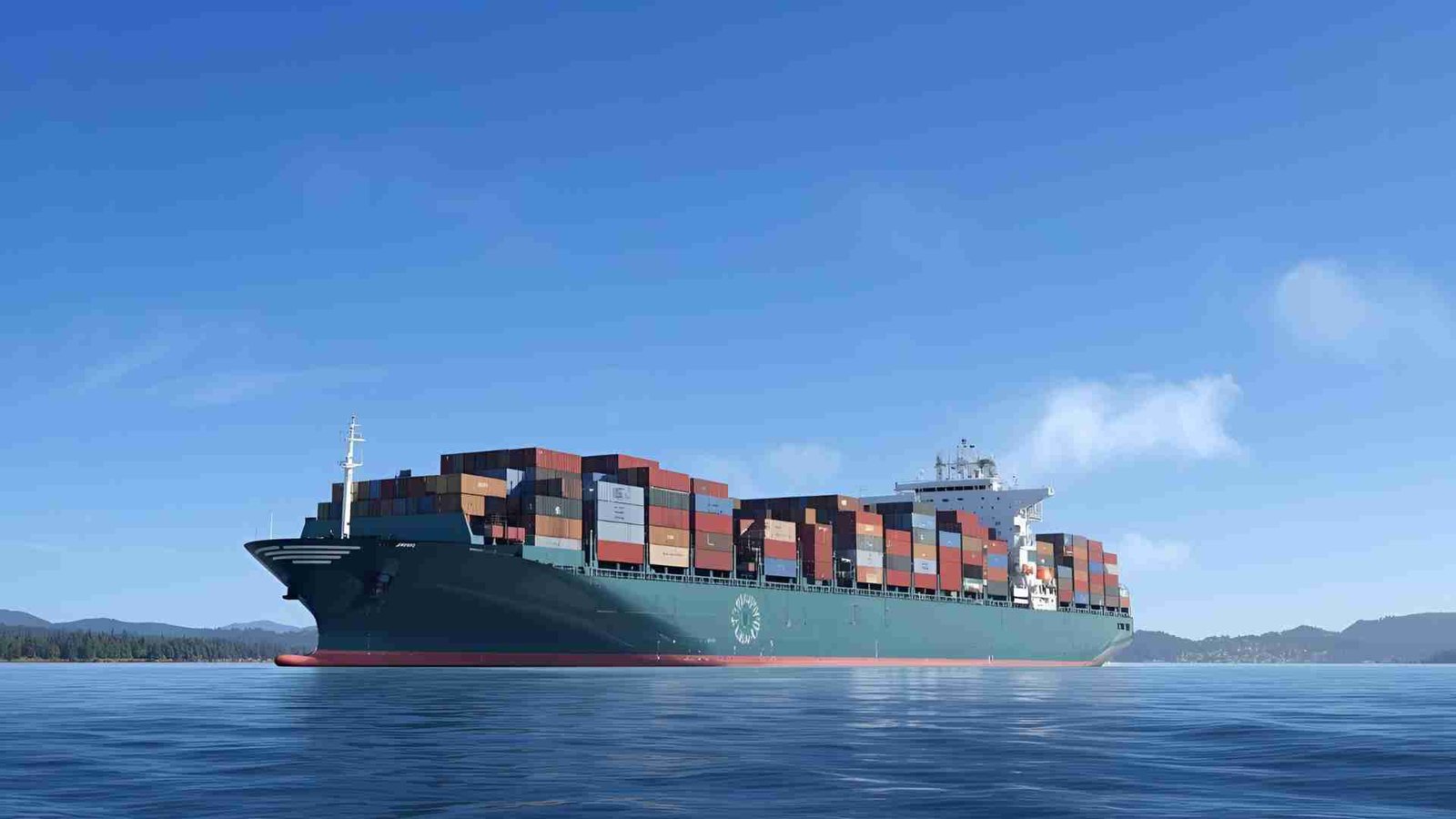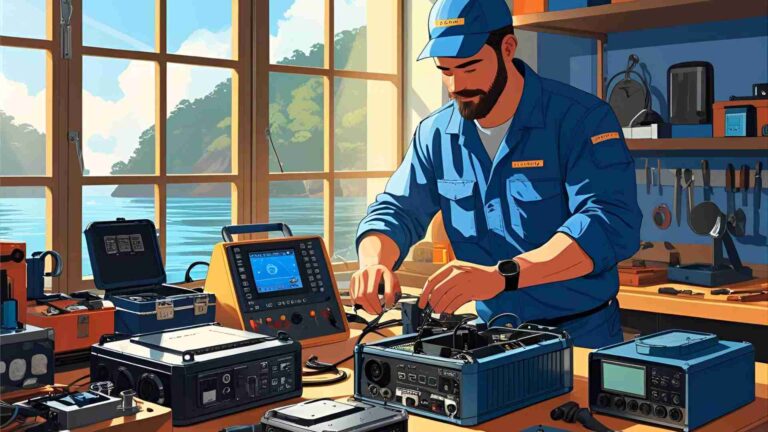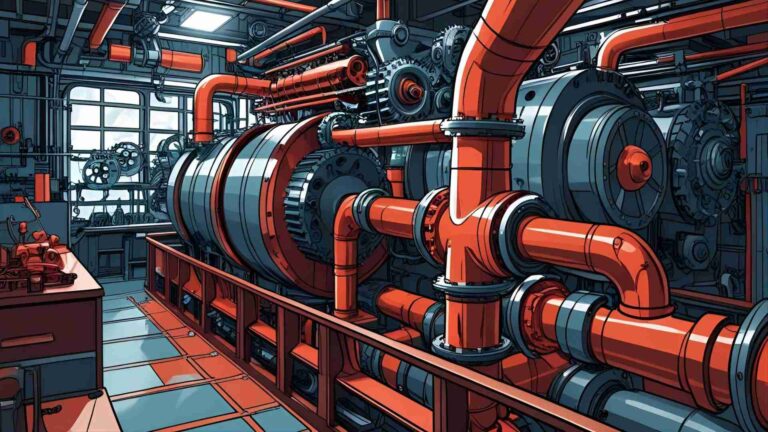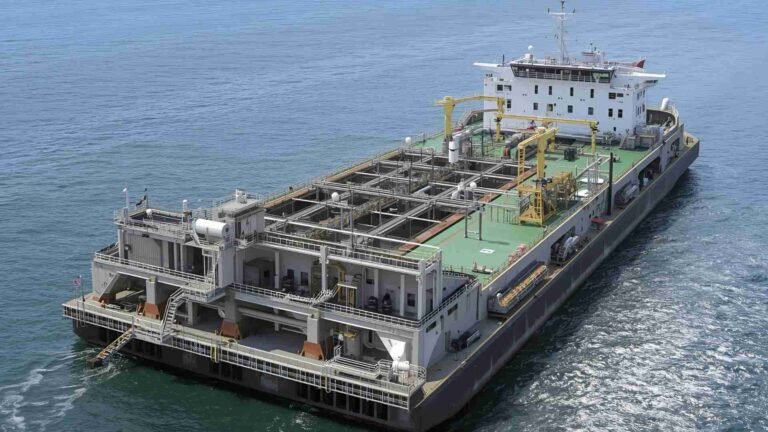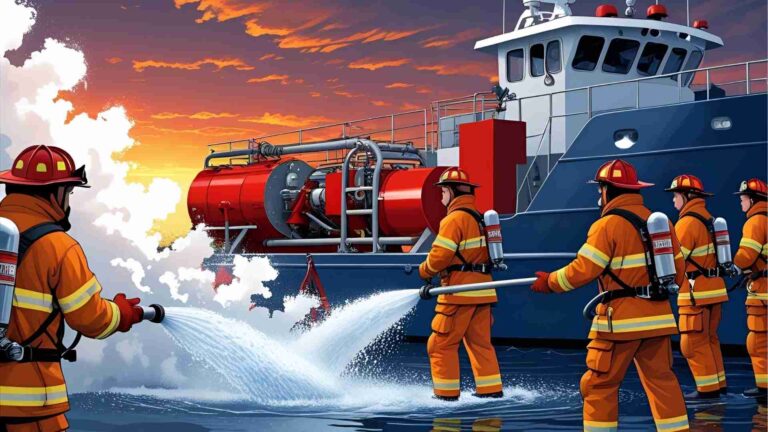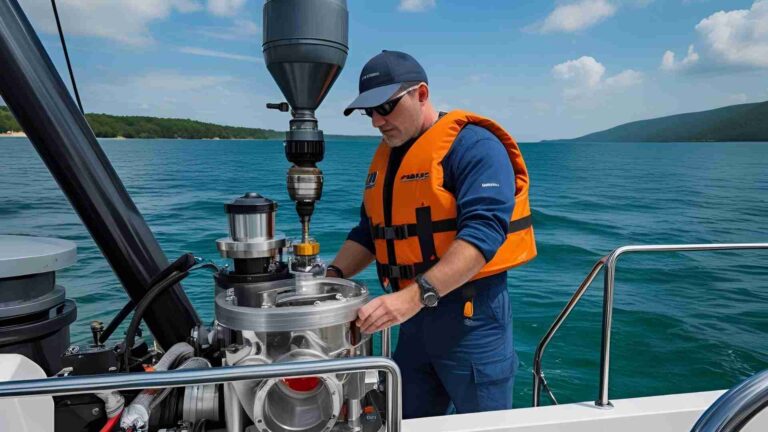MARPOL Annex VI: Prevention of Air Pollution from Ships
The maritime industry is a cornerstone of global trade, with over 50,000 commercial ships transporting goods across oceans. However, these vessels also contribute significantly to air pollution, emitting sulfur oxides (SOx), nitrogen oxides (NOx), volatile organic compounds (VOCs), and greenhouse gases (GHGs) that harm human health and the environment. To address this, the International Maritime Organization (IMO) introduced MARPOL Annex VI, a critical component of the International Convention for the Prevention of Pollution from Ships (MARPOL). Adopted in 1997 and enforced in 2005, Annex VI establishes stringent regulations to curb air pollution from ships, promote energy efficiency, and align the maritime sector with global climate goals.
This article provides an in-depth exploration of MARPOL Annex VI, detailing its regulations, amendments, compliance mechanisms, and environmental impacts. From sulfur limits to carbon intensity indicators, we’ll cover how Annex VI shapes a cleaner, more sustainable future for international shipping.
The Genesis of MARPOL Annex VI
MARPOL, established in 1973 and amended by the 1978 Protocol, is the primary international framework for preventing marine pollution from ships. While earlier annexes focused on oil, noxious liquids, sewage, and garbage, Annex VI specifically addresses air pollution. Its introduction responded to growing concerns about the environmental and health impacts of ship emissions, particularly in coastal regions and ports.
Annex VI targets key pollutants:
- Sulfur Oxides (SOx): Contribute to acid rain and respiratory issues.
- Nitrogen Oxides (NOx): Cause smog and aggravate asthma.
- Volatile Organic Compounds (VOCs): Released during tanker operations, contributing to ozone formation.
- Ozone-Depleting Substances (ODS): Harmful to the atmosphere’s protective ozone layer.
- Greenhouse Gases (GHGs): Drive climate change through carbon dioxide (CO₂) emissions.
Since its inception, Annex VI has evolved through amendments, introducing measures like the Energy Efficiency Design Index (EEDI) and the Ship Energy Efficiency Management Plan (SEEMP) to enhance fuel efficiency and reduce emissions.
Structure of MARPOL Annex VI
Annex VI is organized into five chapters, each addressing specific aspects of air pollution prevention and energy efficiency. Below, we explore each chapter in detail, highlighting key regulations and their implications.
General Provisions
This chapter sets the foundation for Annex VI, defining its scope and key terms.
- Regulation 1 – Application: Applies to all ships, fixed and floating platforms, and drilling rigs unless exempted. It ensures broad coverage across maritime operations.
- Regulation 2 – Definitions: Clarifies terms like “Emission Control Areas (ECAs),” “NOx,” “SOx,” and “EEDI,” ensuring consistent interpretation.
- Regulation 3 – Exceptions and Exemptions: Allows exemptions in emergencies or for specific ship types, balancing practicality with compliance.
- Regulation 4 – Equivalents: Permits alternative technologies (e.g., scrubbers) that achieve equivalent emission reductions, fostering innovation.
This chapter ensures that Annex VI is universally understood and applicable, with flexibility for practical implementation.
Survey, Certification, and Means of Control
This chapter establishes mechanisms for monitoring and enforcing compliance.
- Regulation 5 – Surveys: Mandates initial, annual, intermediate, and renewal surveys to verify compliance with emission and efficiency standards.
- Regulation 6 – Issue or Endorsement of a Certificate: Requires ships to obtain an International Air Pollution Prevention (IAPP) Certificate after passing surveys.
- Regulation 7 – Issue or Endorsement by Another Party: Allows certificates to be issued by another MARPOL Party, facilitating international cooperation.
- Regulation 8 – Form of Certificate: Standardizes the IAPP Certificate’s format for consistency.
- Regulation 9 – Duration and Validity: Defines certificate validity periods and conditions for invalidation (e.g., non-compliance or major modifications).
- Regulation 10 – Port State Control: Authorizes port authorities to inspect ships for operational compliance.
- Regulation 11 – Detection of Violations and Enforcement: Outlines procedures for identifying and penalizing non-compliance.
- Regulation 12 – Platforms and Drilling Rigs: Extends requirements to offshore platforms, ensuring comprehensive coverage.
These regulations create a robust framework for verifying compliance, with certifications and inspections ensuring accountability.
Requirements for Control of Emissions from Ships
This chapter sets specific limits on pollutants and operational practices.
- Regulation 13 – Nitrogen Oxides (NOx): Establishes tiered NOx emission limits (Tier I, II, III) based on engine type and installation date. Tier III, the strictest, applies in NOx Emission Control Areas (NECAs) like the Baltic Sea, North Sea, North American ECA, and U.S. Caribbean Sea ECA.
| NOx Emission Tiers | Implementation Date | Limit (g/kWh) | Applicability |
|---|---|---|---|
| Tier I | 2000 | 9.2–17.0 | Global |
| Tier II | 2011 | 7.7–14.4 | Global |
| Tier III | 2016 (NECAs) | 2.0–3.4 | NECAs |
- Regulation 14 – Sulphur Oxides (SOx) and Particulate Matter: Sets a global sulfur limit of 0.50% m/m (mass/mass) for marine fuel, with a stricter 0.10% limit in ECAs. Ships can use low-sulfur fuel or exhaust gas cleaning systems (scrubbers) to comply.
| Sulfur Limits | Global | ECAs |
|---|---|---|
| Sulfur Content | 0.50% m/m | 0.10% m/m |
- Regulation 15 – Volatile Organic Compounds (VOCs): Targets tankers, requiring VOC management plans during crude oil handling to minimize emissions.
- Regulation 16 – Shipboard Incineration: Prohibits incineration of harmful substances (e.g., PCBs, cargo residues) and mandates approved incinerator standards.
- Regulation 17 – Reception Facilities: Requires ports to provide facilities for waste from scrubbers and other emission control systems.
- Regulation 18 – Fuel Oil Availability and Quality: Mandates high-quality fuel meeting ISO 8217 standards. The Bunker Delivery Note (BDN) must include sulfur content and flashpoint (≥70°C) for safety and compliance.
This chapter directly reduces harmful emissions, protecting air quality and marine ecosystems, especially in sensitive regions like ECAs.
Regulations on Energy Efficiency for Ships
Chapter 4 addresses energy efficiency and GHG emissions, aligning shipping with global decarbonization goals.
- Regulation 19 – Application: Applies to ships of specific types and sizes on international voyages.
- Regulation 20 – Attained EEDI: Requires new ships to calculate their Energy Efficiency Design Index, measuring CO₂ emissions per ton-mile.
- Regulation 21 – Required EEDI: Sets progressively stricter EEDI standards for new ships, encouraging innovative designs.
- Regulation 22 – SEEMP: Mandates a Ship Energy Efficiency Management Plan to optimize operational efficiency.
- Regulation 22A – Fuel Oil Consumption Data: Requires ships to report fuel consumption, distance traveled, and cargo data to the IMO.
- Regulation 23 – Attained EEXI: Applies EEDI-like standards to existing ships, improving their efficiency.
- Regulation 24 – Required Annual Operational CII: Sets CO₂ emission targets per ton-mile for operational efficiency.
- Regulation 25 – Operational Carbon Intensity Rating: Assigns A–E ratings based on CII performance, with corrective actions for low ratings.
- Regulation 26 – Ship Operational Carbon Intensity Plan: Requires plans to meet CII targets.
- Regulation 27 – Verification of Fuel Data and CII: Ensures accurate reporting through audits.
- Regulation 28 – Annual Reporting: Mandates submission of verified fuel and CII data to the IMO.
These regulations drive the maritime sector toward lower carbon emissions, with tools like EEDI and CII fostering accountability.

Verification of Compliance
- Regulation 29 – Verification of Compliance: Establishes inspections, audits, and record reviews to ensure adherence to Annex VI. Port state control and flag state surveys verify compliance, with penalties for violations.
This chapter ensures that regulations are enforced globally, maintaining accountability across the maritime industry.
Key Amendments to MARPOL Annex VI
Annex VI has evolved to address emerging environmental challenges. Notable amendments include:
- Mediterranean Sea ECA: Effective May 1, 2025, this ECA enforces a 0.10% sulfur limit, reducing SOx and particulate matter emissions in a critical region.
- Bunker Delivery Note (BDN) Requirements: Since May 1, 2024, BDNs must include fuel flashpoint or a compliance statement, enhancing safety and verification.
- Carbon Intensity Indicator (CII) Reporting: Effective May 1, 2024, ships must report attained and required CII values, EEXI, and ratings to the IMO, improving transparency.
These amendments reflect the IMO’s commitment to stricter standards and decarbonization.
Environmental and Health Impacts
Ship emissions contribute to air pollution, affecting coastal communities and ecosystems. NOx and SOx cause smog, acid rain, and respiratory issues, while GHGs drive climate change. Annex VI’s measures have significant benefits:
- Reduced SOx and NOx: Lower sulfur limits and NOx tiers improve air quality, especially in ECAs.
- Health Benefits: Fewer emissions reduce asthma, heart disease, and premature deaths in port cities.
- Climate Impact: EEDI, SEEMP, and CII reduce CO₂ emissions, aligning shipping with the Paris Agreement.
By 2030, NOx emissions from ships could double to 2.1 million tons annually without intervention, and PM2.5 could triple to 170,000 tons. Annex VI mitigates these risks, protecting both human health and the environment.
Compliance and Enforcement
Compliance with Annex VI is mandatory for ships operating internationally. Key mechanisms include:
- IAPP Certificate: Proves compliance with emission and efficiency standards.
- Port State Control: Allows inspections in foreign ports to verify compliance.
- EPA and USCG Collaboration: In the U.S., a Memorandum of Understanding (MOU) between the EPA and USCG ensures joint enforcement, including inspections and penalties.
Non-compliance can result in fines, detention, or criminal liability. The EPA’s 2015 penalty policy for sulfur violations emphasizes fair and swift resolutions.
Technological Innovations
Annex VI has spurred advancements in maritime technology:
- Scrubbers: Exhaust gas cleaning systems remove SOx, allowing ships to use higher-sulfur fuel while meeting limits.
- Low-Sulfur Fuels: Very Low Sulfur Fuel Oil (VLSFO) and Ultra Low Sulfur Fuel Oil (ULSFO) meet global and ECA standards.
- Alternative Fuels: LNG, hydrogen, and ammonia are emerging as low-emission options.
- Energy-Efficient Designs: EEDI encourages hull optimization, advanced propellers, and hybrid propulsion systems.
These innovations reduce emissions while maintaining operational efficiency.
Challenges and Future Outlook
While Annex VI has driven progress, challenges remain:
- Compliance Costs: Retrofitting ships with scrubbers or switching to low-sulfur fuel is expensive. For example, scrubber installation costs range from $1–5 million per ship.
- Fuel Availability: Low-sulfur fuel may be scarce in some regions, requiring Fuel Oil Non-Availability Reports (FONARs).
- Global Enforcement: Varying enforcement standards across countries can create loopholes.
Future developments may include expanded ECAs, stricter CII targets, and broader adoption of zero-emission fuels. The IMO’s goal of reducing GHG emissions by 50% by 2050 underscores Annex VI’s role in decarbonizing shipping.
Conclusion
MARPOL Annex VI is a cornerstone of global efforts to reduce air pollution from ships. By regulating SOx, NOx, VOCs, and GHGs, it protects human health, marine ecosystems, and the climate. Its comprehensive framework—covering emission limits, energy efficiency, and compliance verification—ensures accountability across the maritime industry. As amendments like the Mediterranean Sea ECA and enhanced CII reporting take effect, Annex VI continues to drive innovation and sustainability. For shipowners, operators, and regulators, compliance with Annex VI is not just a legal obligation but a step toward a cleaner, greener future for global shipping.
Happy Boating!
Share MARPOL Annex VI: Prevention of Air Pollution from Ships with your friends and leave a comment below with your thoughts.
Read Top 35 Questions and Answers for Oral Exams of Marine Third Engineers in UK until we meet in the next article.
